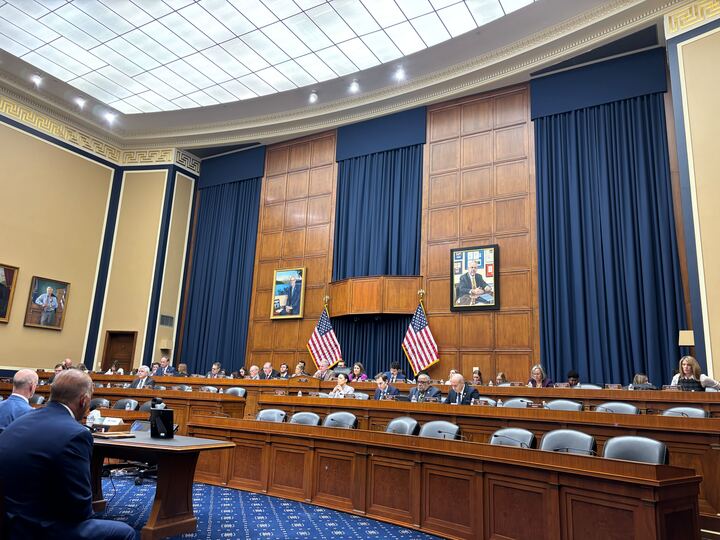WASHINGTON — Testifying about near-death experiences and losing loved ones to fentanyl, witnesses emphasized their concerns about the drug epidemic during a hearing on Capitol Hill Thursday.
“Someone intentionally laced that cocaine with fentanyl,” said Raymond Cullen, whose son died of the narcotic. “Our son did not accidentally overdose. He was poisoned. There is a difference. Actually, we personally feel that he was murdered.”
Democrats and Republicans on the House Energy and Commerce Committee aligned on the dire need to curb fentanyl production and distribution, as well as increase access to naloxone, an antidote commonly referred to as Narcan that counteracts an overdose before it becomes fatal. Many representatives emphasized their own fears of their children dying of a drug overdose or poisoning.
Witnesses spoke about the need for an “all of the above” approach to addressing the threat of illegal drugs. Some of these measures include breaking international chains of drug commerce, enacting legislation to hinder supply and demand and providing treatment programs for people with addiction. All five speakers stressed the importance of bolstering education and prevention efforts for adolescents, parents and medical professionals.
Democrats repeatedly emphasized that many of the programs currently in place are now at risk following President Donald Trump’s federal funding freeze that was temporarily rescinded.
Despite two judges calling for a pause on the freeze, Yale research professor and physician scientist Deepa Camenga said she heard accounts of treatment programs already operating less effectively with fewer resources after Trump pulled back funding.
Among the many organizations that could lose significant resources to curb and combat drug threats, Medicaid, the National Institutes of Health and the Substance Abuse and Mental Health Services Administration are at risk, along with various research initiatives.
“If Medicaid were significantly reduced, more people would die of overdoses,” said Georgetown Law professor Regina LaBelle.
Rep. Troy Carter (D–La.) underscored such concerns. “My fear is that there may be another attempt or another approach used to slow, reduce or cut resources that would aid in the slowing and hopeful elimination of these uses of fentanyl,” he said.
Multiple witnesses and representatives emphasized the importance of labeling fentanyl as a Schedule I drug, rather than maintaining its current Schedule II status. A ratchet up in drug categorization would make fentanyl illegal for both recreational and medical use, unlike its current classification, which only bars recreational use.
“Many of the victims of fentanyl distribution, drug distribution, themselves become incarcerated while many of the upstream distributors go off scott-free,” Rep. Alexandria Ocasio-Cortez (D–N.Y.) warned. Lebelle added that the risk of overdosing is more than ten times greater for people who are released from prison than for the general public, according to the NIH.
The Committee’s hearing comes after Trump designated drug cartels as foreign terrorists, and Canadian Prime Minister Justin Trudeau did the same, appointing a “fentanyl czar.” Trump also negotiated with Mexican President Claudia Sheinbaum to deploy 10,000 Mexican National Guard officers to the border to curb migrants and drugs from entering the U.S.
The CDC’s estimate of approximately 80,000 deaths from overdoses, primarily fentanyl, in 2023 demonstrates a decrease in deaths from opioids.
“We are encouraged that we are making progress, and that is important,” Committee Chairman Buddy Carter (R–Ga.) said. “However, we can’t stop. We can’t stop until we completely eradicate this.”


